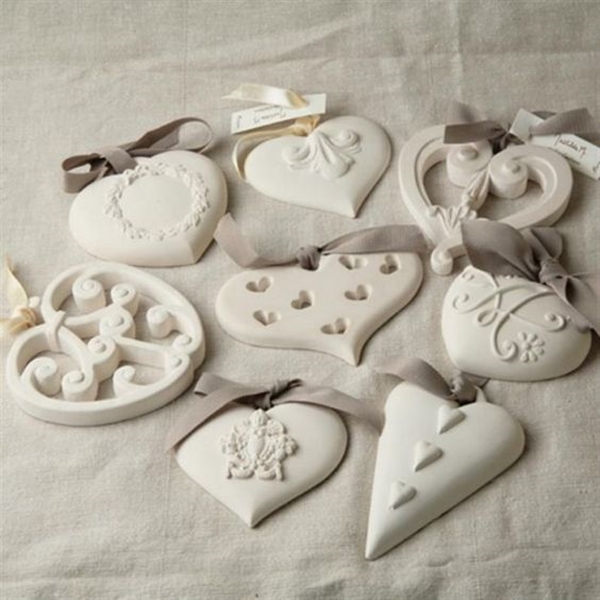

If possible, it’s recommended you use some sort of primer before applying any paint to your plaster piece. Water and oil-based paints will soak into the porous areas of the statue and will require multiple coats.Īcrylic paints are the top choice for painting any plaster statue because their chemical composition creates a slight “seal” once they are dry as well as a smooth, glossy surface. Epoxy resin will provide the most waterproofing abilities to any Plaster of Paris craft. Drawbacks to epoxy resin are that it is expensive and requires the correct ratio of resin to hardener in order to work well.Īfter application, it can be sanded, primed, and painted just like any other sealant. Probably the most durable among all the sealants, epoxy resin will provide a hard “shell” finish on any object.
#Plaster of paris crafts to paint plus
But on the plus side, it is easier to paint over a shellac spray than it is a polyurethane spray because shellac can function as a primer as well. The biggest difference is that shellac can cast a slight yellow hue once dried. Shellac paint/primer functions in a similar way as polyurethane. You can opt for a primer that works with your brand of paint if you so choose, but honestly, a couple of layers of acrylic paint will help to seal the plaster and provide your sculpture with the intended color. Acrylic PaintĪcrylic paint is especially useful if you are planning on painting your piece after sealing it because it can allow you to combine both steps into one easy process.Īcrylic paint dries glossy and is well-known for being rather impermeable to water and other elements. It also dries to a glossy finish, so if you don’t plan on painting afterwards, this type of sealant is a great option to add shine to your finished piece.

Polyurethane will fill in most of the pores in the plaster, though a yearly application for outdoor objects is recommended. However, a regular paintbrush will work just as well. Applying it via a spray can makes the application quick and easy. Polyurethane SealantĪn oil-based polyurethane sealant is fairly hassle-free and quick drying.

They can include polyurethane, acrylic, shellac, or epoxy sealant. There are multiple sealants you can use for Plaster of Paris. It serves as a wonderful base and gives structural integrity, but it needs to be sealed (and painted) in order to provide you with longevity. Think of Plaster of Paris as the drywall in your house.

A seal of some sort applied on top of a finished product will not only prevent moisture from ruining its integrity of it but will also provide a smooth base for paints or other finishes if you so choose. If allowed to get too wet, the bond becomes weaker, and the material can actually warp or sag. Plaster of Paris is not waterproof on its own. It’s been used for multiple purposes outside of the building, such as immobilizing casted limbs, fireproofing certain chalked material, and of course arts & crafts! The Importance of WaterproofingĮven though Plaster of Paris can be set fairly quick, it’s also prone to deterioration if exposed to the elements – especially moisture. It was commonly used to build statues and make repairs on public buildings. Its moniker comes from the abundance of gypsum powder found around Paris in the 1300s. The most common type of powder used is gypsum (calcium sulfate), but there are also Lime and Cement varieties that function in much the same way. Plaster of Paris is a powder that quick-sets when mixed with water.


 0 kommentar(er)
0 kommentar(er)
